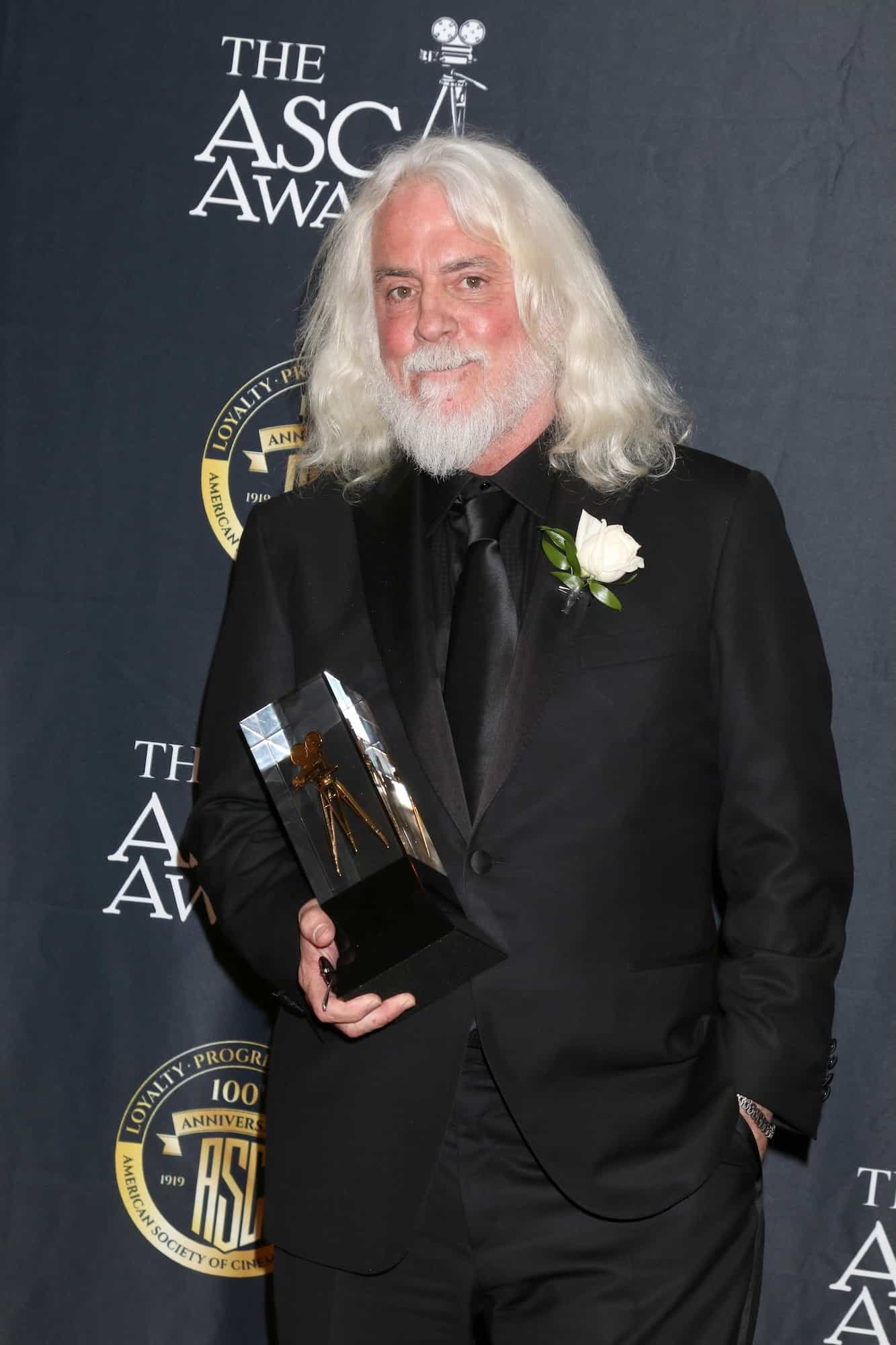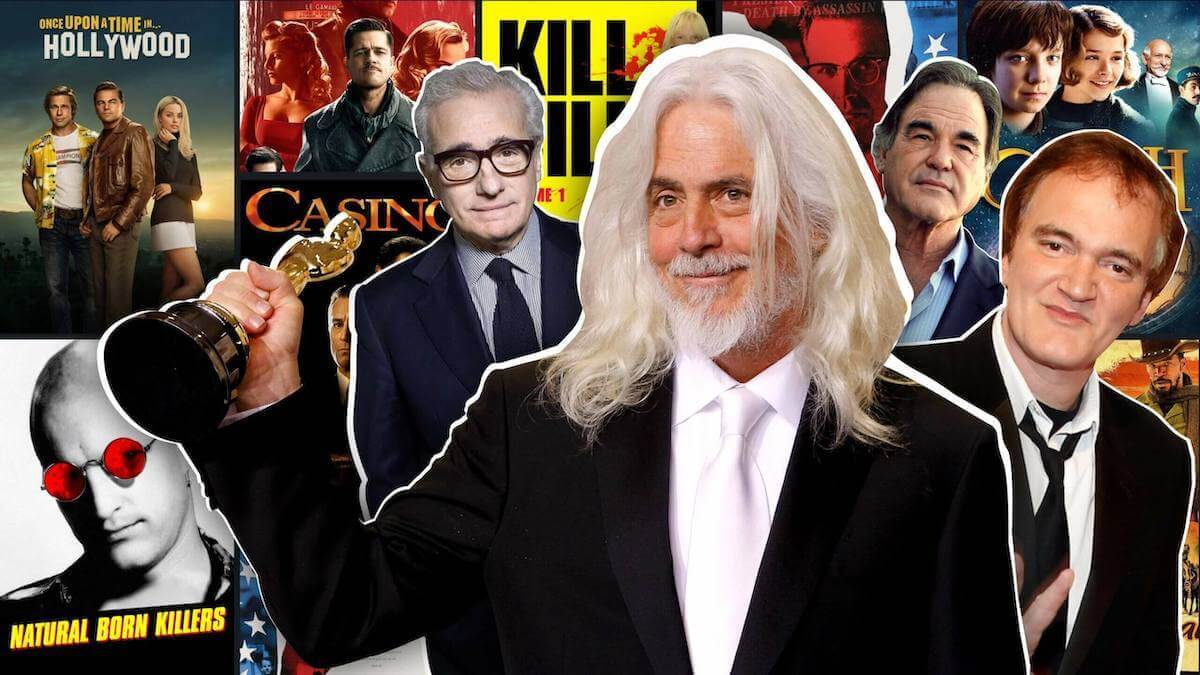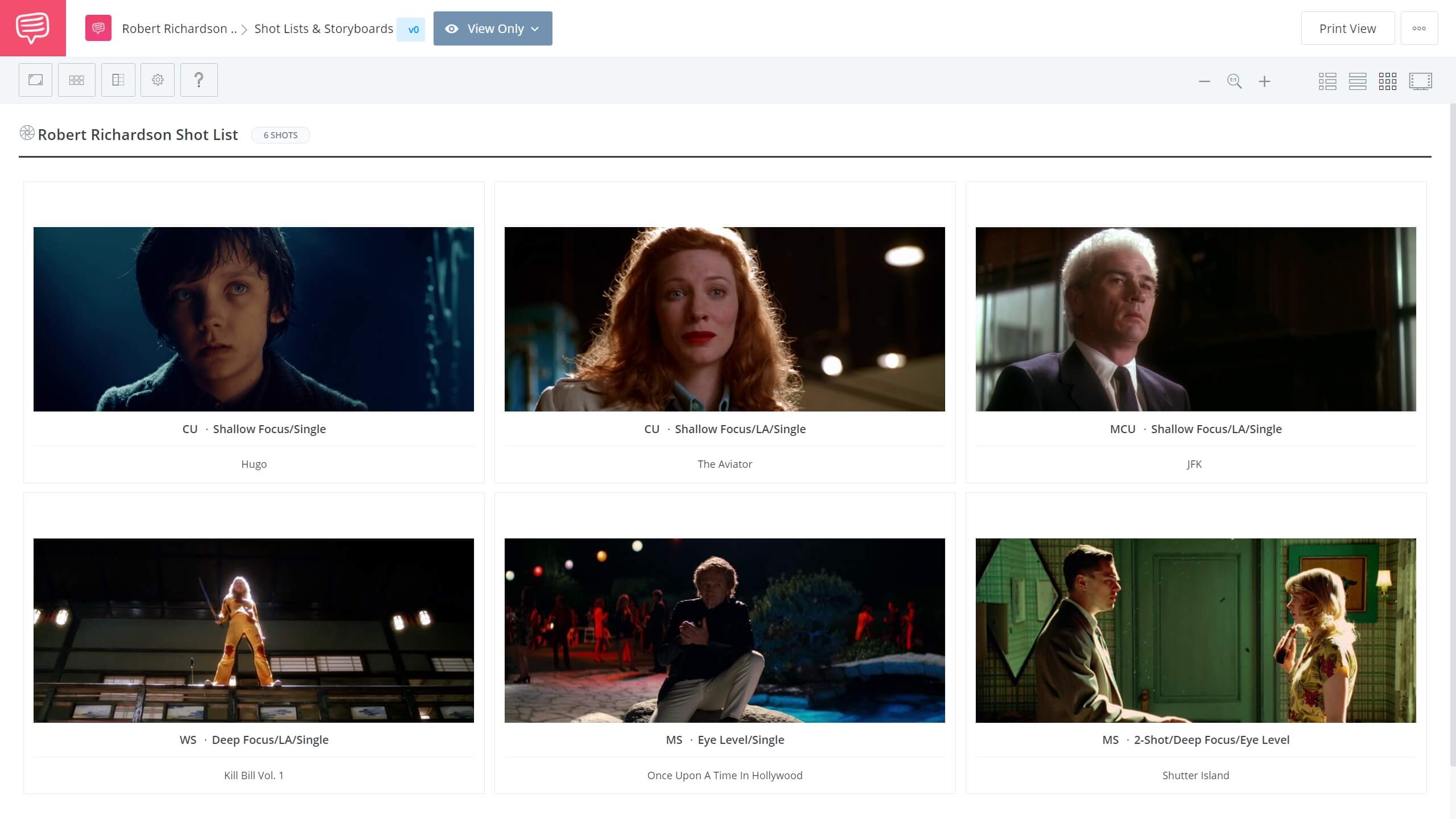With over 40 years of experience working as a feature cinematographer, Robert Richardson has lensed movies for director’s like Oliver Stone, Martin Scorsese and Quentin Tarantino. He’s worked on everything from 65mm film to stereoscopic 3D and has won the Academy Award for cinematography three times (for his work on JFK, The Aviator and Hugo)! It’s definitely worthwhile paying attention to his work, here’s four lessons that you can learn from the Robert Richardson style of cinematography.
robert richardson style
Operate the camera yourself
Visit Richardson on set and you’ll most likely find him behind the camera. He’s a big proponent of cinematographers operating the camera themselves, rather than delegating it to a camera op.
In fact, Google ‘Robert Richardson BTS’ and you’ll see that in almost every photograph of him, he is behind the camera, often riding a Pegasus crane.
I have developed my eye as a cinematographer through the craft of operating. When I am not operating, I am often anxious, uncertain, restless, sometimes irritable. When I am in the position of working with Steadicam or remote cameras, I fly with a broken wing.
— Robert Richardson


Richardson winning his ASC award
While other cinematographers choose to use a remote head on a Technocrane, Richardson chooses a Pegasus, riding beside the camera. This is likely due in part to his preference for using a viewfinder over a monitor.
When working on a small monitor you can still see a great deal of the set/location around you, but when using a viewfinder it’s easier to shut out everything beyond the frame and focus on the image you are creating.
Here is some B-roll of Richardson shooting Django Unchained for Tarantino. You can see just how often Richardson is operating and working with a crane.
BTS Django Unchained Cinematography
Of course, it’s possible to create engaging camera movement with a variety of different devices. But we can’t help but feel that physically operating the camera allows Richardson to more intuitively contribute to the story through his camera movement. His physical connection with the camera and eye for composition is evident in the intricate camera movements of his work.
Robert richardson once upon a time in hollywood
Creative lighting
Directors often have specific compositions in mind before arriving on set. Some directors, like Tarantino, even write visuals directly into the script. Richardson speaks passionately about the need to support the director’s creative vision.
But even if the director requests specific camera movements or compositions there is still a great deal of creativity left to the cinematographer, especially with regards to lighting the scene.
My career is based primarily upon finding a balance with a director and their vision, and that means sublimating my own personal ego toward their material.
— Robert Richardson
While recent cinematography has trended towards desaturated ‘naturally’ lit images, Richardson continues to produce bold images with strong colors and stylized lighting.
In particular Richardson favors strong rim lighting with back or top lights.
We used StudioBinder's storyboard software to collect a series of images from Richardson's career with his main collaborators. You can immediately see this prevalence of top/rim lighting. Follow the image link for a closer look.
Even if the characters are dimly lit, the ‘halo’ produced by the back or top light clearly shows shape and movement. The brightly lit outlines contrast with the dark background to make striking and easily understandable images.
Consider the opening sequence in Inglourious Basterds, where the darkness of the farmhouse contrasts with the beam of top light landing on the table. In this video, we discuss how this scene is constructed to maximize tension.
Robert Richardson style on display in Inglourious Basterds • Subscribe on YouTube
Richardson isn’t afraid to overexpose the rim light either, an effect that works particularly well when shooting on film.
Additionally, as top or back lighting bathes large areas of the set with light, it’s a very flexible way of working. Actor’s can move around freely and the back or top light can be bounced to provide fill light or even key lighting.
Robert richardson style
Prod. design and cinematography
Richardson believes good production design is the foundation of good cinematography:
Good work that people think is the cinematographer’s is often that of the production designer. We light their work, and when their work is beautifully accomplished, by which I mean well matched to the story, the result is vastly superior.
— Robert Richardson
It’s hard to argue with that! There’s an incredible amount of skill involved with cinematography, but amazing art direction and a magnificent location make it so much easier to produce beautiful images.
For example, consider the Spahn Ranch sequence from Once Upon a Time in Hollywood. The location is bursting with personality and tension, something Richardson's cinematography could easily build on. Here's our breakdown of that scene, including the compositions and shot choices.
Robert Richardson Once Upon a Time in Hollywood • Subscribe on YouTube
This leads us nicely into our final tip.
Bob Richardson’s Philosophy
Let your crew invest in your movie
Richardson talks about his fondness of directors who make their film crew feel like family and allow them to invest their own love and ideas into the film. Naturally, he has the same attitude towards his crew. This has many benefits.
Here he is discussing his personal philosophy to shooting, the importance of his relationship with the director, and the way he prefers to work.
Robert Richardson on shooting The Hateful Eight and more
Better motivated
When your crew is emotionally invested in your film, their work is personal rather than just a job. They will be more willing to go the extra mile and make your movie amazing.
Better ideas
While it’s important to protect the integrity of your artist vision (too many cooks spoil the broth) members of your crew might have better ideas than yours. What’s more important to you? Making the best film possible or making a film where you made all the decisions (whether they were good or bad)?
Nicer working environment
When you make your crew feel like family, they will treat you like family. It’s one thing to make a film that you enjoy, but how about enjoying making the film as well. That’s the gold standard!
Cinematographer Robert Richardson Breaks Down His Career
UP NEXT
Cinematic Film Lighting Techniques
If you are fired up and inspired by Robert Richardson’s work and ready to create some amazing cinematography yourself, you’ll love this article about 5 Cinematic Film Lighting Techniques. Shooting projects on a budget can mean limitations on your gear, but it doesn’t mean that you need to compromise on the look. We’ll break down several lighting techniques that are achievable on any budget.
Up Next: Lighting Techniques →
Showcase your vision with elegant shot lists and storyboards.
Create robust and customizable shot lists. Upload images to make storyboards and slideshows.

